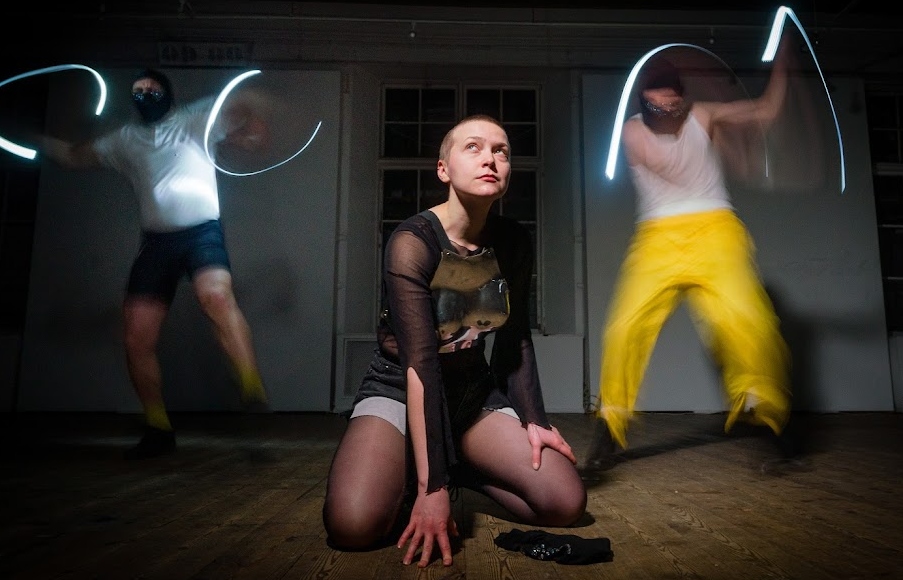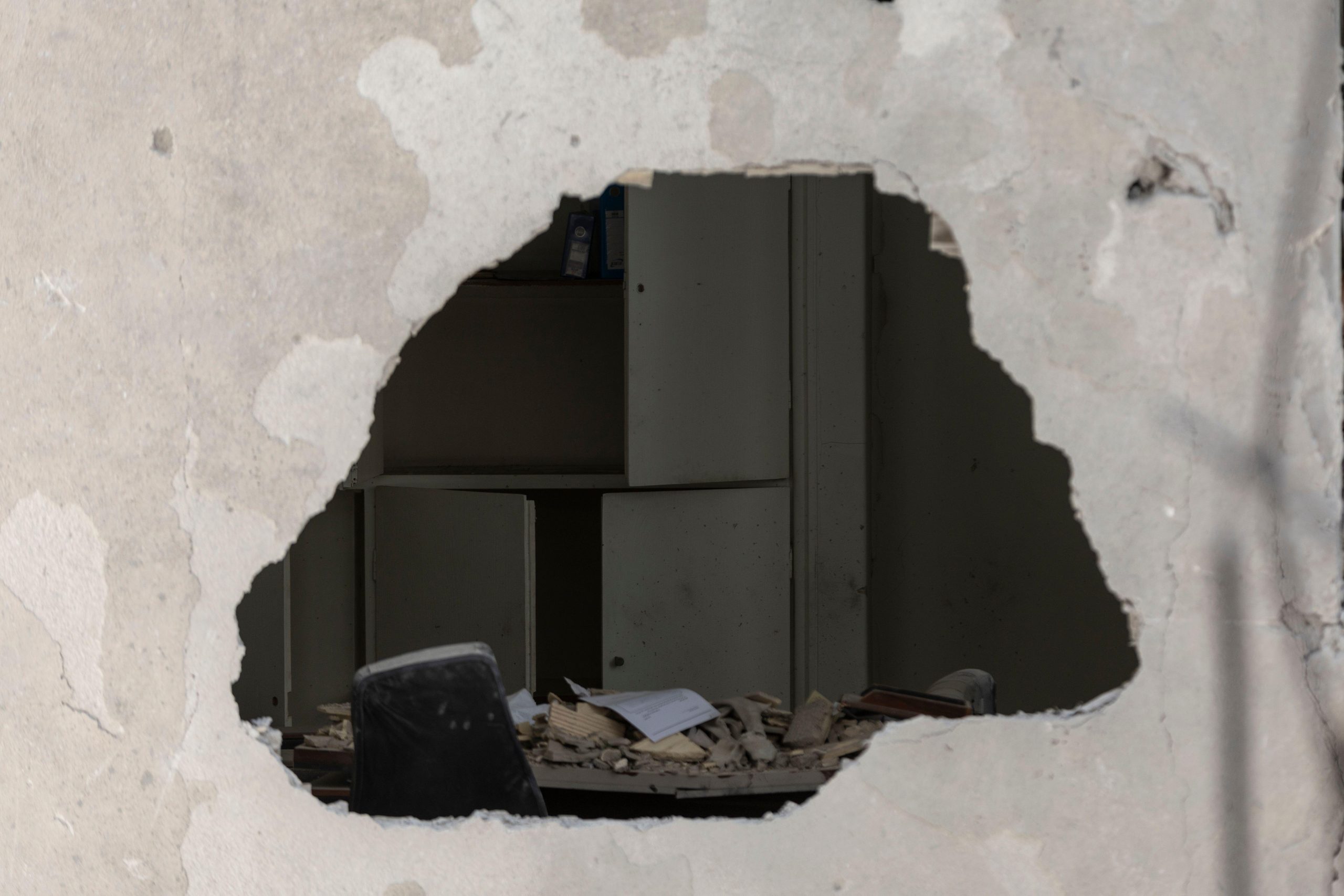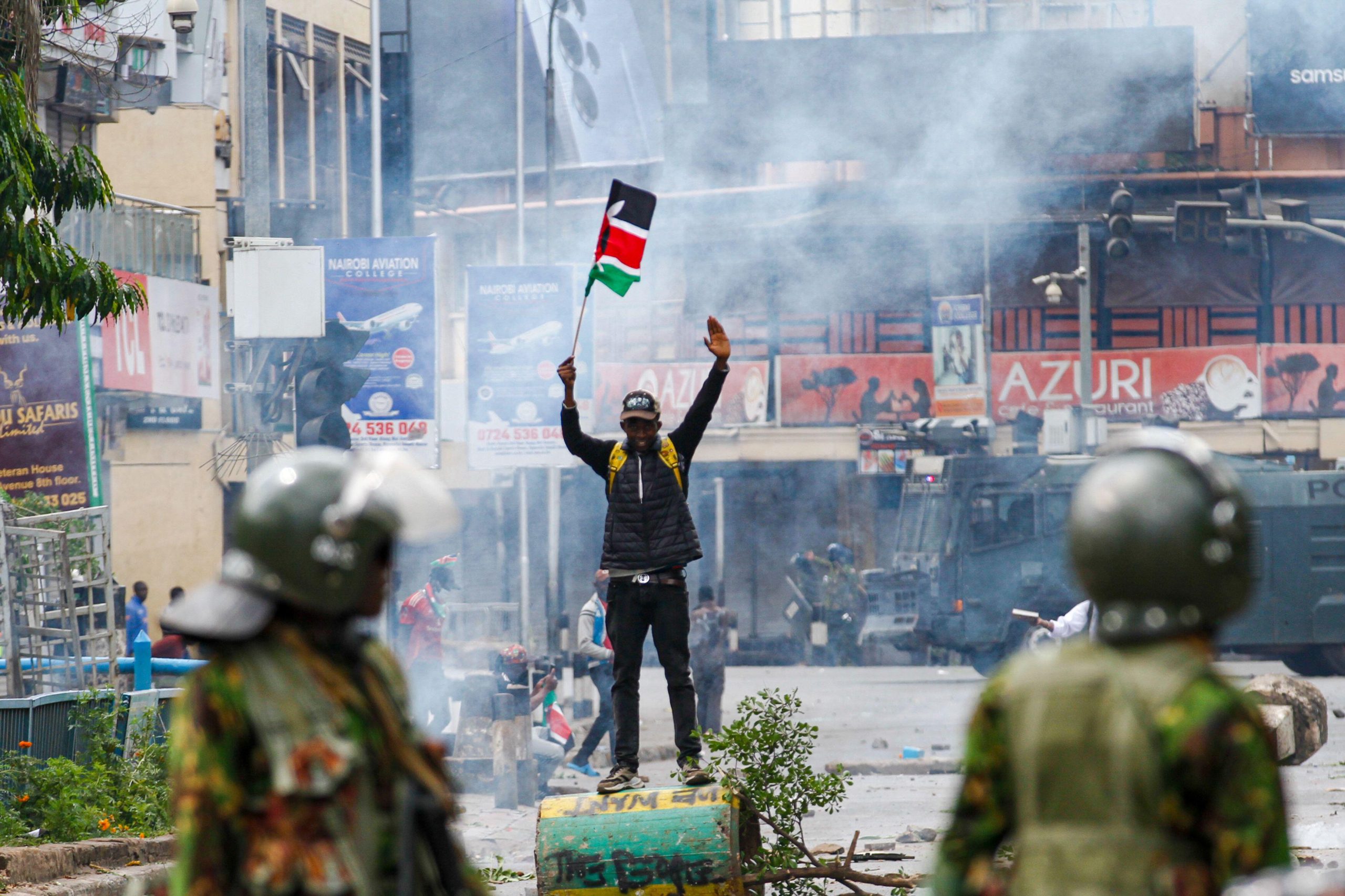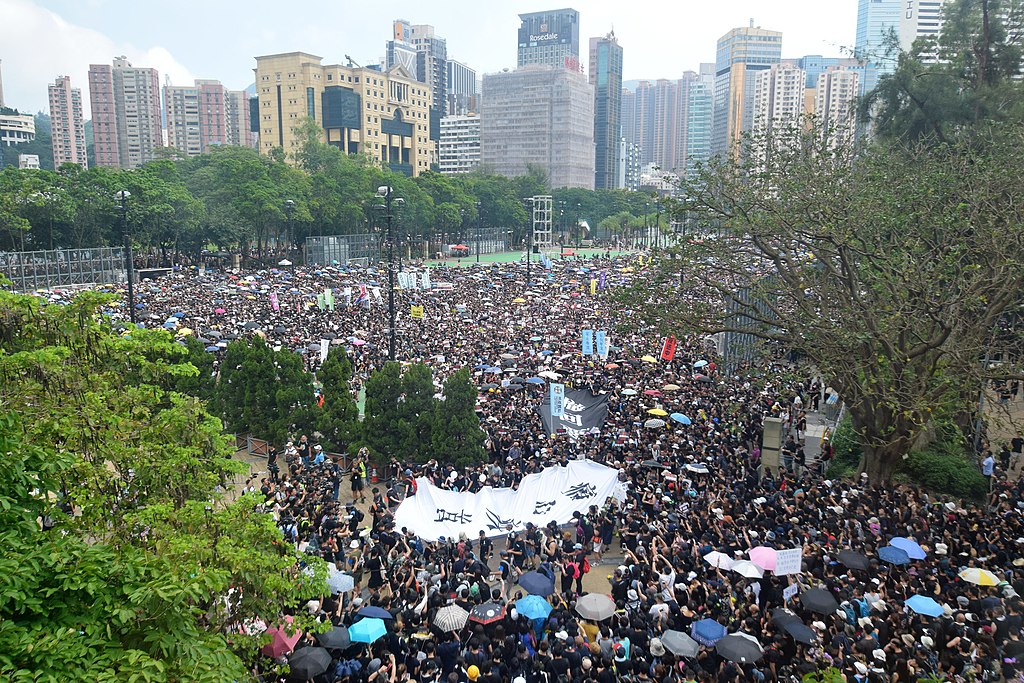You are handed a piece of paper as you enter the room. Move around, come up close, move away, sit down, do what you want; it instructs. All it asks is you be present together (and, naturally in the modern age, turn off your mobile phone).
Eventually everybody pulls up a chair, but the conformity of the audience doesn’t extend to the performance. A mixture of song, dance, poetry and performance art, Bunker Cabaret is a creative explosion.
Performed at Somerset House in Central London by the Hooligan Art Community, Bunker Cabaret is billed as an “exploration of love versus totalitarianism, and the personal conflicts of making art in time of war.” Formed in Kyiv in 2019, two of its male actors, Sam Kyslyi and Danylo Shramenko, developed scenes in a bomb shelter in the city, which would become the inspiration for the show. Leaving Ukraine, they were joined later by other members including Mirra Zhuchkova, who earlier escaped to Germany.

Photo by Steve Tanner
Bunker Cabaret opens with Kyslyi stood on a bed of fairy lights, interspersing elegant dancing with shadow boxing. The fusing of beauty with brutality, which one would imagine was how the seeds of the show were sown, is evident.
The audience is dropped into an animated conversation between Kyslyi and Shramenko. Almost childlike, it’s a game of “guess this noise”, which seems innocent enough until the correct answers compose of weaponry and warcraft. The lived experience of being trapped in a war zone is conveyed by the ability to note the difference in sound between a MiG-29 and a MiG-31.
A series of monologues are performed, including from Zhuchkova. Hers are dreamlike, almost abstract (and nightmarish), perhaps reflecting the pain of being torn away from home, and the hope of one day returning. The sound of fireworks punctuates the end of her final speech, with a strong, unifying gesture for each person in the audience. Kyslyi’s monologues are more real and descriptive of his experience, often resulting into a burst of song at the end.
Loud traffic passes outside the large windows of the room, where people could easily peek inside. This seems like a conscious decision, and like the instructions given at the start, the audience and environment play a part of the performance just as much as the actors in the room.
Ukrainian artists have been targeted since the Russian occupation and assault began. The attacks on Kyiv killed Artem Datsyshyn, the principal dancer of the National Opera of Ukraine, and the famous actress Oksana Shvet. Musicians, painters and photographers are among those killed so far; an attempt to erase Ukraine’s cultural and artistic contributors.
Despite being under attack, closed Ukrainian cultural institutions have started to programme again. Several branches of the National Art Gallery in Lviv reopened, as well as The Theater on Podil in Kyiv. Still, the circumstances for art and artists in Ukraine remains challenging.
Bunker Cabaret is not a conventional performance, but neither are the circumstances that brought it to Somerset House. It’s a paean to the fortitude of art in the hardest of conditions.
Bunker Cabaret is currently on a UK tour. Dates and ticket details are here.






